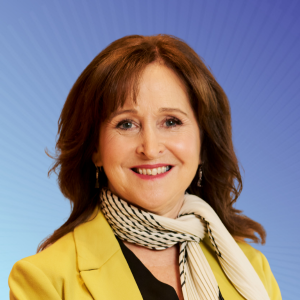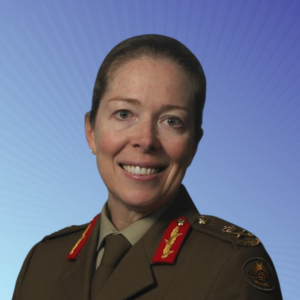9 May 2012
Retirement costs stay steady: new ASFA Retirement Standard figures
A couple looking to achieve a ‘comfortable’ retirement will need to spend $55,080 a year, while those seeking a ‘modest’ retirement lifestyle need to spend $31,643 a year, according to new figures released today for the ASFA Retirement Standard.
For the second consecutive quarter, costs for retirees have remained steady and are in fact marginally down (by a dollar or two a week) on the equivalent figures for the previous quarter for the first time since June 2010.
The aggregate costs for a couple living comfortably in retirement were down by 0.3 per cent in the March quarter 2012 from the December quarter 2011 (see budget breakdown below). For a single female living at the modest level, costs were down by 0.1 per cent compared to the previous quarter.
The difference largely reflects the fall in the price of goods and services in the leisure category, which makes up a larger proportion of the budget at the comfortable level.
The movement in costs over the quarter for retirees at the modest level was similar to the 0.1 per cent increase recorded in the All Groups Consumer Price Index (CPI).
However, in some quarters the price increases recorded will differ as retiree households on average have somewhat different spending patterns to the rest of the population.
Along with generally owning their own home outright (so cost increases for housing are less important for retirees), on average they spend a negligible amount on education services, ensuring the rising cost of both secondary and tertiary education in the March quarter 2012 had relatively little impact on retiree expenses.
In contrast, food, health, transportation and recreation spending form a large part of retiree budgets.
Budgets for various households and living standards (March quarter 2012)
| Modest lifestyle – single | Modest lifestyle – couple | Comfortable lifestyle – single | Comfortable lifestyle – couple | |
| Housing – ongoing only | $58.58 | $56.23 | $67.89 | $78.70 |
| Energy | $35.37 | $46.98 | $35.89 | $48.68 |
| Food | $73.04 | $151.29 | $104.34 | $187.81 |
| Clothing | $17.75 | $28.82 | $38.43 | $57.64 |
| Household goods and services | $25.80 | $34.97 | $72.56 | $85.00 |
| Health | $35.84 | $69.17 | $71.10 | $125.49 |
| Transport | $93.22 | $95.86 | $138.92 | $141.56 |
| Leisure | $71.96 | $107.21 | $218.07 | $298.85 |
| Communications | $9.31 | $16.30 | $25.60 | $32.58 |
| Total per week | $420.87 | $606.85 | $772.81 | $1,056.32 |
| Total per year | $21,946 | $31,643 | $40,297 | $55,080 |
The figures in each case assume that the retiree(s) are aged 70 and own their own home and relate to expenditure by the household. This can be greater than household income after income tax where there is a drawdown on capital over the period of retirement. Single calculations are based on female figures. All calculations are weekly, unless otherwise stated.
Between the December quarter 2011 and the March quarter 2012, retirees experienced a 2.1 per cent decrease in the cost of food and over the year to the March quarter, there was a decrease of 2.5 per cent.
The largest falls for the March quarter were recorded in Melbourne (-2.3 per cent), Adelaide (-2.3 per cent), Sydney (-2.2 per cent) and Perth (-2.2 per cent).
Largely responsible for this negative movement in all cities was a fall in the price of fruit over the quarter (by 30 per cent), with much of this attributable to the decreasing price of bananas as supplies recovered after the adverse impact of Cyclone Yasi. Falls in the price of fruit ranged from 33.3 per cent in Adelaide to 16.9 per cent in Darwin.
Electricity costs rose on average by three per cent, reflecting substantial price increases in a number of states. Typically electricity prices in each state are relatively constant for a few quarters followed by a large increase. The price increase over the year was 9.9 per cent.
Transport costs increased 1.1 per cent, with a 2.5 per cent increase in the cost of automotive fuel. This was partially offset by a decrease in the cost of motor vehicles.
The prices of leisure goods and services fell by two per cent between the quarters, with the cost of overseas holidays falling by 4.8 per cent and domestic holidays by two per cent. This had particular implications for the comfortable budgets.
Communications costs increased by only 0.1 per cent over the quarter. The increase in costs over the year was also a relatively modest 1.6 per cent.
The 4.4 per cent increase in the price of health services reflected a 14.1 per cent increase in pharmaceutical prices due to fewer individuals benefiting from the Pharmaceutical Benefits Scheme safety net.
Over the year there was a 4.2 per cent increase in the cost of health services. Over the longer term, health services tend to experience higher increases in price than other categories of consumer goods and services.
More information
Costs and summary figures can be accessed via the ASFA website. The downloadable ASFA Retirement Standard document also includes estimates of the lump sums that would be needed in order to support expenditure at the various levels set out in the modest and comfortable budgets for singles and couples. These lump sums did not change between the December and March quarters as the expenditure needs were basically the same. The lump sum needed for a comfortable lifestyle, assuming access to a part-Age Pension, is around $510,000 for a couple and $430,000 for a single
For media inquiries, please contact:
Pauline Vamos, CEO, 0433 169 342
Rebecca Glenn, GM Marketing and Communications, 0416 170 439
Megan McDougall, Media and Communications Coordinator, (02) 8079 0849
About the ASFA Retirement Standard
The ASFA Retirement Standard, formerly the Westpac-ASFA Retirement Standard, is an independent initiative by the Association of Superannuation Funds of Australia (ASFA) benchmarking the annual budget needed by Australians to fund either a comfortable or modest standard of living in the post-work years.
It is updated quarterly to reflect inflation and provides detailed budgets of what singles and couples would need to spend to support their chosen lifestyle.
Modest lifestyle in retirement
Better than the Age Pension, but still only able to afford fairly basic activities.
Comfortable retirement lifestyle
Enabling an older, healthy retiree to be involved in a broad range of leisure and recreational activities and to have a good standard of living through the purchase of such things as; household goods, private health insurance, a reasonable car, good clothes, a range of electronic equipment, and domestic and occasionally international holiday travel.
About ASFA – the voice of super
The Association of Superannuation Funds of Australia is the peak industry body for superannuation and retirement policy and research. Its members represent over 90 per cent of the approximately 12 million Australians with superannuation. ASFA members manage or advise on the bulk of the $1.3 trillion in superannuation assets as at September 2011. ASFA is the only organisation that represents all types of superannuation funds (retail, industry, corporate and public sector) and associated service providers.
































